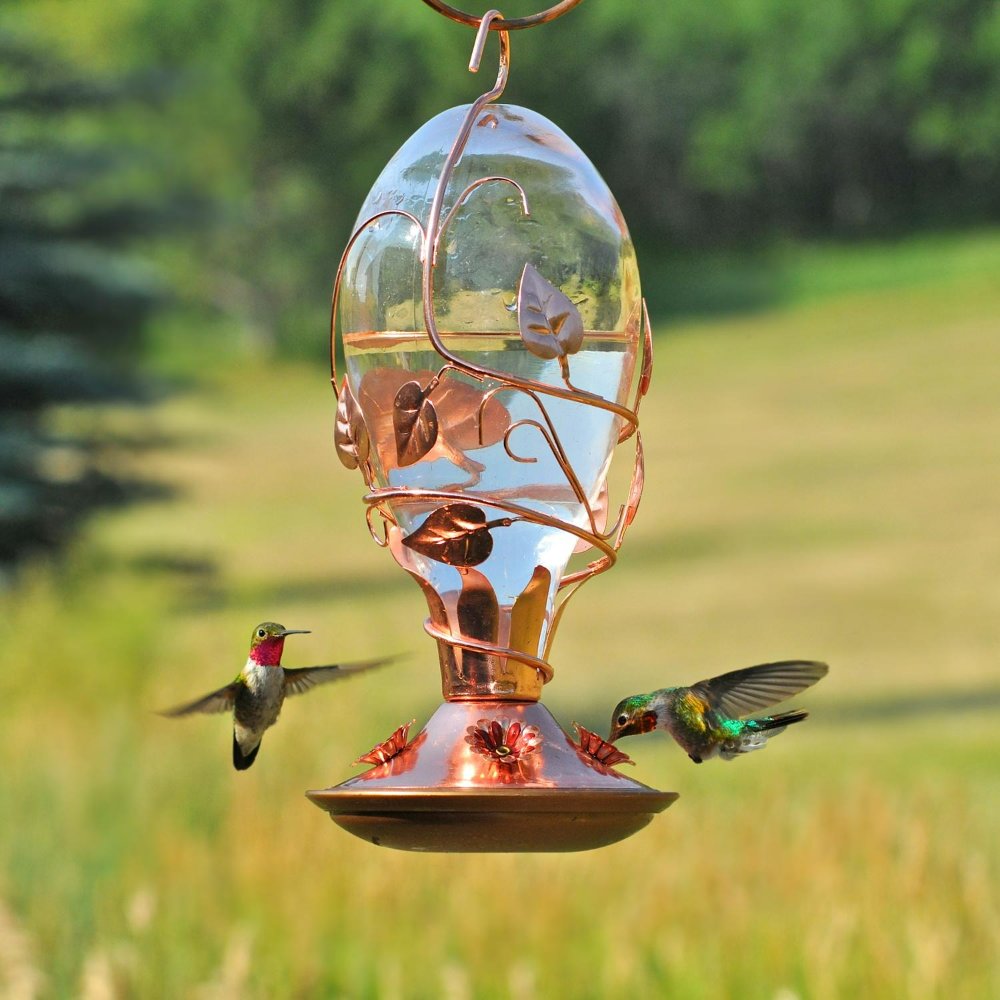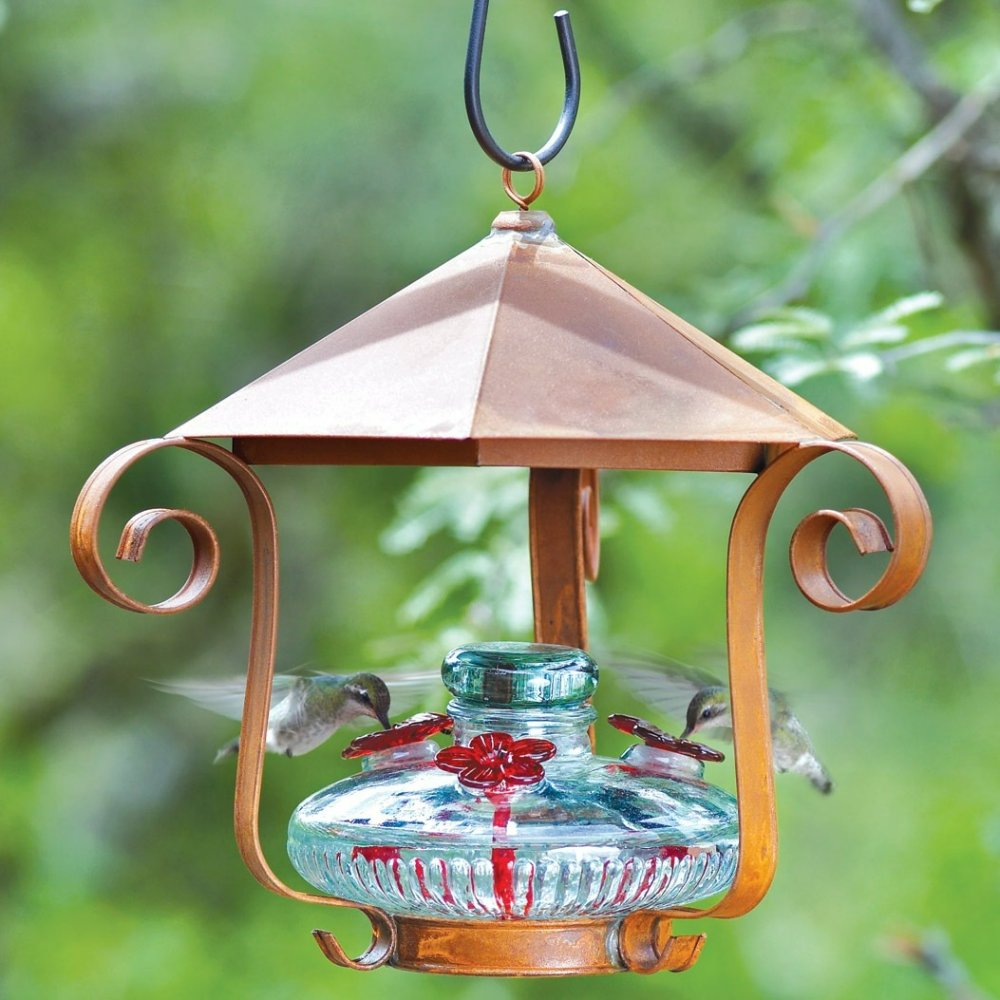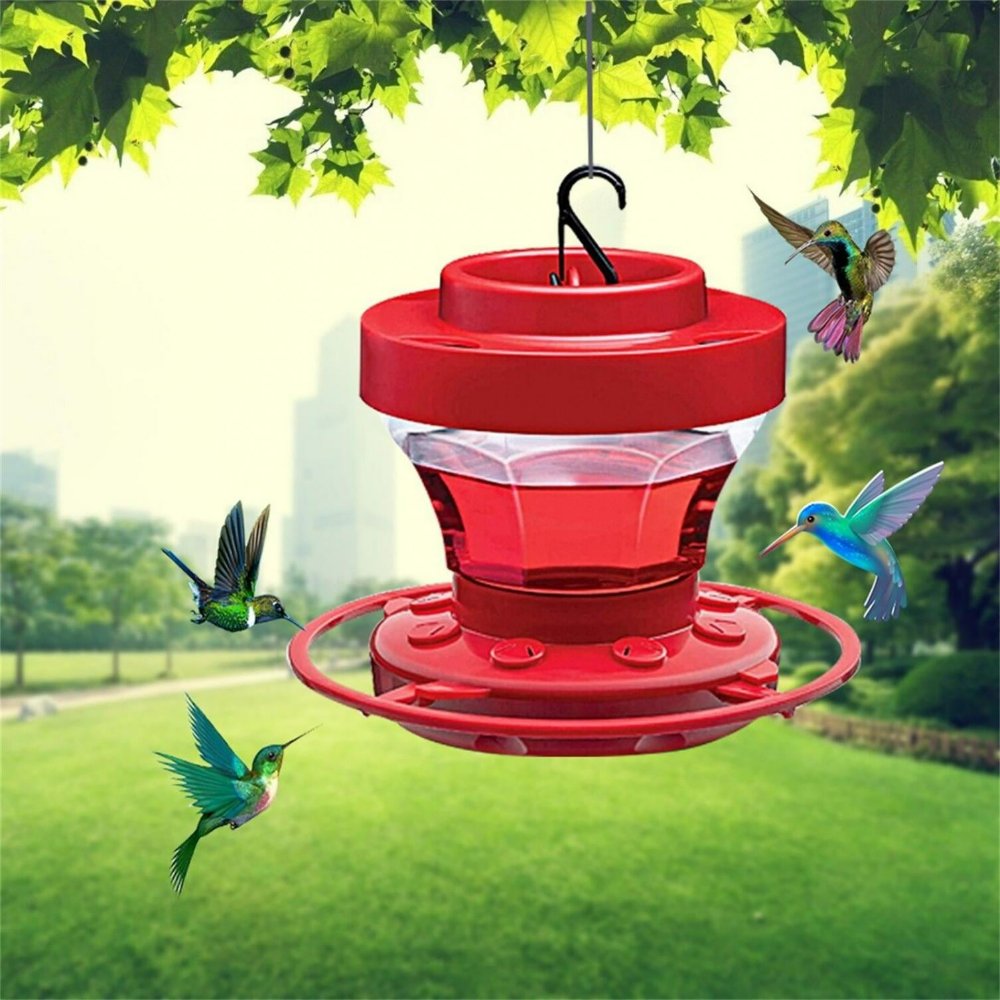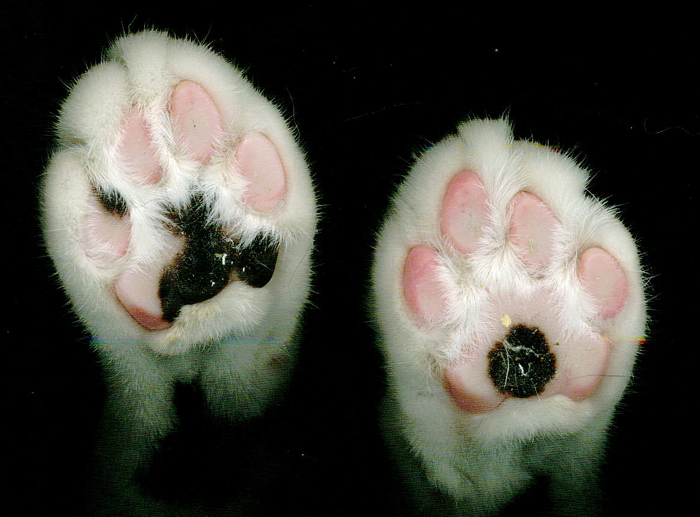The Best Location for Hummingbird Feeders
Finding the perfect spot for your hummingbird feeder can make a significant difference in attracting these tiny, energetic birds. As a lover of hummingbirds, you want to ensure that the location of the feeder appeals to their natural preferences and provides safety. To decide where to place hummingbird feeder, consider the following criteria:
- Visibility: Position the feeder where it can be easily seen by passing hummingbirds. An open space within view of a window will invite both the birds for a meal and provide you with the pleasure of watching.
- Shelter: While visibility is crucial, it’s equally important to provide protection from the elements. A location with a natural canopy, like under a tree branch, can shield hummingbirds and feeders from direct sunlight and rain.
- Flower Proximity: Hummingbirds are naturally attracted to brightly colored flowers. Placing feeders near your garden or flower beds can help attract more visitors, as they already associate these areas with food sources.
- Tranquility: These birds prefer calm and peaceful feeding spots. So, choose a place away from noisy areas and high traffic to avoid startling the hummingbirds.
- Consistency: Once you’ve found the right spot, try to keep the feeder in the same location. Hummingbirds are creatures of habit and will return to feeders they remember from previous seasons.
Settling on the best location requires considering these factors to create an idyllic dining spot for your feathered guests. With the right placement, not only will hummingbirds benefit, but you’ll also enjoy the delightful sight of these birds fluttering and feeding. Keep these tips in mind about where to place hummingbird feeder and you’re more likely to enjoy a yard buzzing with the activity of these charming birds.

Understanding Hummingbird Behavior and Preferences
To make your yard a hummingbird haven, understanding their behavior and preferences is key. These fascinating birds seek out environments that cater to their needs for food, safety, and breeding sites. Here are some insights into hummingbird behavior and how you could use them to consider where to place hummingbird feeder:
- Zone of Comfort: Hummingbirds prefer feeding in areas that are free from disturbances. They are more likely to visit feeders in tranquil spaces.
- Feeding Habits: They feed frequently throughout the day. Placing the feeder in a spot that allows for easy in-and-out access can cater to their high metabolism.
- Preference for Bright Colors: These birds are drawn to red and other bright colors. Including these hues around the feeder area may increase attractiveness.
- Territorial Nature: Hummingbirds can be territorial around food sources. Multiple feeders spread out can reduce conflicts over feeding spots.
- Attracting with Water: They also need water for drinking and bathing. A nearby water source can make your feeder location more appealing.
By incorporating an understanding of these preferences and behaviors into your decisions about where to place hummingbird feeder, you increase the chances of frequent visits from these lovely birds.
Tips for Safe Feeder Placement
Ensuring the safety of hummingbirds is as important as attracting them to your garden. When deciding where to place hummingbird feeder, prioritize spots that reduce risks. Here are several tips to keep your feathered guests safe:
- Height from Ground: Place feeders at least five feet off the ground. This height keeps them out of reach from cats and other predators.
- Distance from Windows: Position feeders at least four feet away from windows to prevent birds from colliding with the glass. Alternatively, place them closer than three feet to give birds less momentum if they do hit the window.
- Avoidance of Chemicals: Select a location away from areas that are treated with pesticides or herbicides. Chemicals can be harmful to the birds and contaminate their food.
- Stable Support: Ensure the feeder hangs from a stable support to prevent it from swinging or tipping over, especially on windy days.
- Accessibility for Maintenance: Choose a spot that is easy for you to access for regular cleaning and refilling of the feeder without disturbing the birds too much.
By following these tips on where to place hummingbird feeder, you can help maintain a safe and welcoming environment for hummingbirds to enjoy their meals without harm.

Seasonal Considerations for Feeder Locations
As seasons change, so do the needs of hummingbirds. To keep your feeder spots ideal, think about the following seasonal adjustments.
- Spring and Summer: During warmer months, you can place the feeder in a spot that provides morning sun and afternoon shade. This keeps the nectar from spoiling too fast in the heat.
- Fall Migration: In fall, hummingbirds prepare for migration. Place feeders in open areas where birds can easily spot them as they pass through.
- Winter Strategy: If you live in an area where hummingbirds stay year-round, consider wind protection. Choose a location shielded from harsh weather to offer a stable feeding spot.
- Food Supply: Keep the feeder full as food sources become scarce. During peak migration, increased nectar can support the birds’ energy needs.
Adjusting your feeder locations with the seasons boosts your chances of attracting hummingbirds all year. Keep these tips in mind and your visitors will thank you with their presence.
The Role of Natural Habitat in Feeder Placement
Incorporating the natural habitat into your hummingbird feeder placement is essential. Hummingbirds seek out areas that mimic their native environment. Here are some pointers to utilize the natural habitat:
- Mimic Native Flora: Try to mimic the plants that hummingbirds naturally feed from. This includes planting native tubular flowers that are rich in nectar.
- Use Natural Perches: Position the feeder near natural perches, such as trees or shrubs. This gives the birds a place to rest between feedings.
- Create a Safe Retreat: Ensure that there is dense foliage or other hiding spots near the feeder. This gives hummingbirds a sense of security and a place to escape potential threats.
- Keep it Natural: Avoid using artificial decorations that could disturb the birds. Stick to natural materials and colors that blend into the environment.
By thoughtfully considering the natural habitat when deciding where to place hummingbird feeder, you can make your garden more inviting. These tiny birds will feel more at home and are likely to become regular visitors to your feeder.

Visibility: Making Feeders Attractive and Accessible to Hummingbirds
To draw hummingbirds to your yard, feeder visibility is key. Here are effective ways to ensure your feeder stands out:
- High Contrast: Place your feeder against a backdrop that makes it pop. A clear sky or a dark green hedge works well.
- Movement: Hummers love things that move. Hang shiny ribbons or a wind spinner nearby to catch their eye.
- Reflection: Use sunlight to your advantage. Position the feeder so sunlight reflects off the surface, creating a visual beacon for birds.
- Strategic Color: Red is magnetic for hummingbirds. Choose a feeder with red accents, or tie a red ribbon to attract them from afar.
- Good Lines of Sight: Keep the area around the feeder open. This makes the feeder easy to spot and offers hummingbirds a clear approach.
Remember, a visible feeder will invite more hummingbirds to your garden. Use these tips on where to place hummingbird feeder to create a buzzing hub for these delightful guests.
Protecting Hummingbird Feeders from Predators and Pests
When considering where to place hummingbird feeder, protection from predators and pests is vital. Here’s how you can safeguard your feeders:
- Avoid Ground Level: Keep feeders above the reach of cats and dogs. High placement prevents attacks from ground predators.
- Use Ant Moats: Ants love sweet nectar. Install an ant moat to keep these pests away from the feeding ports.
- Bees and Wasps: Choose feeders with bee guards. This will reduce the risk of stings and keep insects from stealing nectar.
- Strategic Placement: Place the feeder near the house but out of reach of squirrels. They often jump from roofs or trees.
- Cleaning Regularly: A clean feeder is less likely to attract pests. Ensure frequent cleaning to avoid attracting unwanted insects.
- Clever Distractions: Set up alternative food sources for pests. This lures them away from the feeders. Use fruit or sugar water far from the feeding area.
- Reflective Tape: Hang reflective tape around the feeder area. The light and movement deter birds of prey and other predators.
Providing a safe place for hummingbirds involves keeping their dining area pest-free. Use these tips on where to place hummingbird feeder to keep hummingbirds coming back without unwanted visitors.
Maintaining and Cleaning Your Hummingbird Feeders
To keep hummingbirds healthy and eager to visit, feeder maintenance is essential. Here are straightforward steps to ensure your feeder remains a safe and welcoming spot:
- Regular Cleaning: Clean feeders at least once a week. Use hot water and a mild detergent, then rinse well.
- Avoiding Mold: Check for mold or black spots inside the feeder. These can harm hummingbirds. Scrub them off immediately.
- Rinsing Thoroughly: After washing, rinse the feeder with plenty of water. Leftover soap can be harmful to birds.
- Air Drying: Let your feeder air dry completely before refilling. This reduces mold growth.
- Fresh Nectar: Change the nectar every few days, more often in hot weather. Old nectar can ferment and become toxic.
- No Chemicals: Never use bleach or harsh chemicals to clean the feeder. They can be dangerous to hummingbirds.
- Feeder Integrity: Inspect your feeders for damage. Cracks or breaks can hurt hummingbirds or cause leaks.
- Proper Assembly: Ensure all parts are correctly assembled. A poorly constructed feeder can lead to leaks or spills.
By diligently maintaining and cleaning your hummingbird feeder, you help provide a safe dining experience for your winged visitors. Remember these tips on where to place hummingbird feeder and ensure a clean and inviting habitat for hummingbirds to return season after season.


